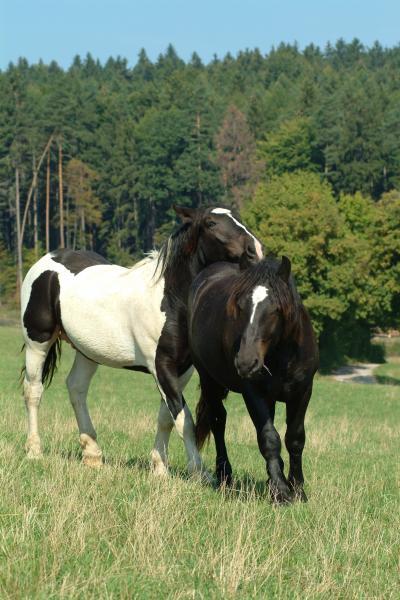The medical treatment of horses requires not only specialized knowledge but also specialized equipment. Horses' lungs are large and when they breathe horses take in a correspondingly large volume of air. It is not easy to supply this in an emergency. Suitable respirators are available in hospitals but are not always there when they are needed, for example in the barn, in the pasture, in the woods, during transport or at other places where emergencies can and do occur.
A bellows to inflate lungs
Yves Moens is Head of the Vetmeduni's Clinical Unit of Anaesthesiology and Perioperative Intensive Care Medicine. He and his colleagues have long been concerned by the number of horses that die avoidable deaths because of the lack of a suitable ventilation device. The scientists have designed a ventilation pump for large animals with which veterinarians can simply and quickly resuscitate animals in the field. The device is similar to the bellows used to inflate air mattresses and is easy to carry and to use. In the event of an emergency, the vet can intubate the animal on site by inserting a breathing tube into its trachea. The ventilator pump is connected to the bellows and operated by foot. Exhalation is effected via a second valve that is manually controlled.
The small device produces enough air for ventilation

An adult horse needs about five to six liters of air per breath to obtain enough oxygen. An appropriate ventilator must provide this volume in case of emergency.
(Photo Credit: Photo: Vetmeduni Vienna)
An adult horse needs about five to six litres of air in its lungs to be able to obtain enough oxygen. A correspondingly large bellows would be too large to be operated by one man and could not be transported in a conventional car. Although the Vetmeduni's emergency ventilator can only provide 2.5 litres of air, the researchers believed that it would be sufficient for the respiration of horses if the bellows are activated several times in quick succession. They tested this idea on five anaesthetized Haflinger horses during castration surgery in a pasture. The vets were able to show that gradual ventilation with the 2.5 litre pump is sufficient to keep the animals alive.
Respiration outdoor provides safety for animals and humans
In recent decades, anaesthetic medicine for humans and animals has developed highly sophisticated equipment and narcotics. Researchers at the Vetmeduni are developing improved anaesthetic techniques and ventilation equipment to reduce the risks during surgery.
The respiratory pump is one of the outcomes. "It improves the safety of large animals in the field, both during routine anaesthesia and in emergencies. It will also help veterinarians to provide emergency first aid in these circumstances and respect the guidelines for good practice ", says Moens. The respiratory pump is inexpensive and easy to use and will help veterinarians treat their patients in the field.